What Is Website Schema & Why Should You Care?
Unlocking the Power of Schema Website for Better Search Results
Website schema markup was introduced in 2011 by Google as a structured data format for helping search engines more accurately display relevant results to users. Unlike humans, who can understand the context of searches, search engines require structured data implementation to interpret webpage content effectively. Implementing website schema is crucial for enhancing your site’s visibility in search results by providing clear, structured data that search engines can easily process.
Key Takeaways About Website Schema Implementation
- Website schema markup provides search engines with structured data to better understand and display webpage content.
- Top Draw’s expert developers implement schema markup to enhance your website’s visibility in search results.
- Schema markup helps search engines differentiate between similar terms like “Red Deer” the city versus the animal.
- Schema.org provides standardized vocabulary for structured data implementation across all major search engines.
- Different schema types serve specific purposes, from local business information to product details and reviews.
- Schema markup implementation can significantly improve how your website appears in search results.
- Proper schema implementation requires technical expertise and understanding of structured data formats.
Feeling overwhelmed by website schema implementation? Don’t let complex structured data markup hold back your search engine optimization efforts! At Top Draw, our expert developers implement JSON-LD schema markup effectively. We’ll help you implement the right schema types for your website, ensuring search engines properly interpret your structured content and boosting your organic visibility through rich snippets. Schedule your free technical SEO consultation today and let’s discuss how we can optimize your website’s schema implementation for search success!
How Schema Web Solves Search Engine Confusion
Consider this example: When users search for red deer hunting in Alberta, search engines often display results about Red Deer the city. Search engines show these results because they lack the schema markup context to distinguish between information about the animal species versus the city location. Webpage schema provides the necessary structure to help search engines understand contextual differences, ensuring users receive the most relevant search results for their queries.
Website schema markup consists of structured data vocabulary that digital marketing agencies implement to communicate effectively with search engines like Google and Bing for refined search results. The website Schema.org provides comprehensive schema types in an accessible microdata format. These schema properties are organized into different categories with specific subcategories for structured data implementation.
For example, the schema markup hierarchy includes an organization schema type that branches into the more specific Local Business schema, which further subdivides into a Store schema implementation. Schema org standardization ensures consistency across all major search engines, making it essential for effective SEO strategies.
Each schema category contains unique structured data properties while inheriting all attributes from higher-level schema types in the hierarchy.
The implementation result? Your webpage stands out in the Search Engine Results Pages (SERPS) through rich snippets, increasing the likelihood of users selecting your content over competitors – which drives the ROI of schema markup implementation!
Real-World Website Example of Schema Markup Boosting Search Visibility
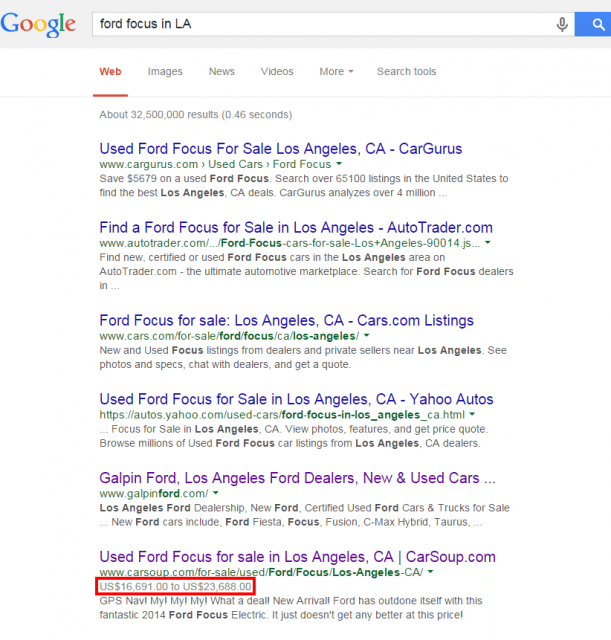
Notice how this search result stands out despite not being the top-ranked listing? The webpage implements a price range schema markup, which is part of the Offer structured data that displays the price range of their used Ford Focus inventory. This schema implementation achieves several crucial objectives:
Streamlining User Experience with Web Schema Price Range Implementation
The price range schema markup helps potential customers make informed decisions quickly. Users outside the displayed price range can skip the listing, while qualified buyers are more likely to click through because the structured data provides upfront cost information. Web schema implementation is particularly effective for e-commerce sites where pricing information is a key decision factor for users.
Standing Out in Search Results with Schema Markup Implementation
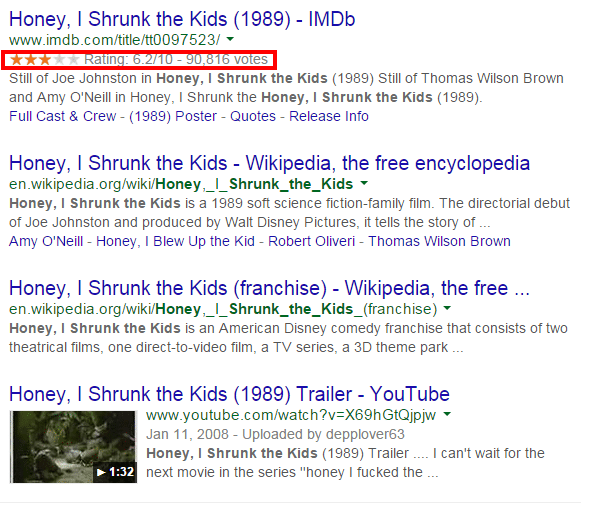
The schema markup implementation provides a competitive advantage since competitors haven’t utilized this structured data type. Creating differentiation in search engine results through schema markup offers significant benefits, especially in competitive markets like automotive sales.
Consider another example where schema markup enhances search results. When researching the movie “Honey I Shrunk The Kids” (the classic version featuring Rick Moranis), an aggregated review schema displays ratings from 85,458 votes, showing a 6.2/10 rating. The review schema implementation provides clear benefits:
Time-Saving Benefits – The aggregated review schema helps users make quick decisions based on collective ratings. When numerous reviewers contribute to a consolidated rating through structured data, the schema markup simplifies decision-making for potential viewers.
Diverse Applications of Site Schema Implementation Across Industries
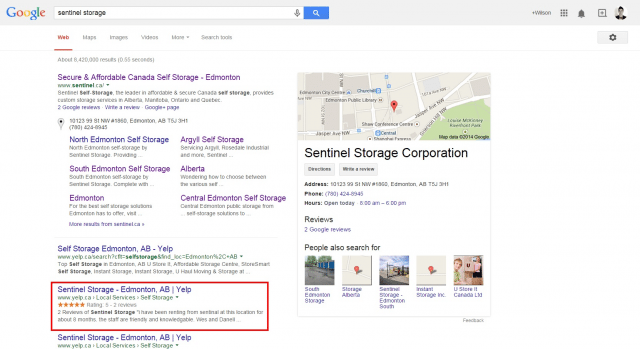
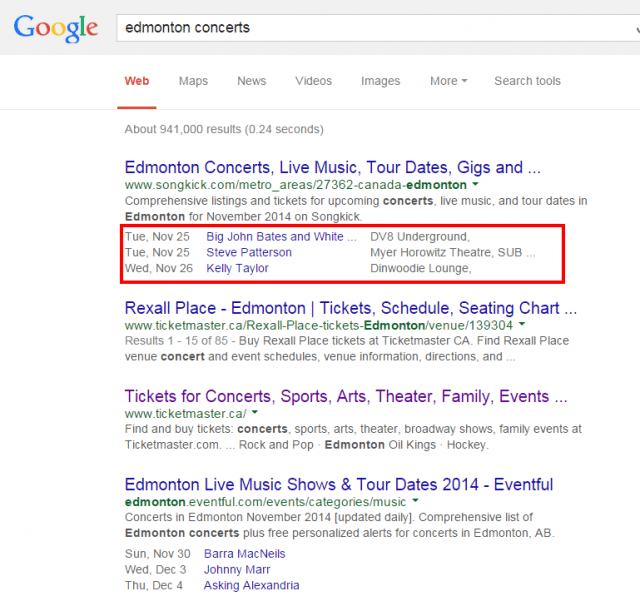
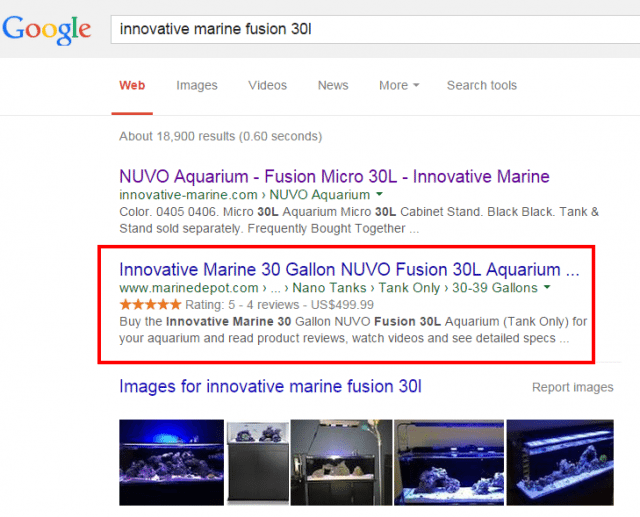
Harnessing the Competitive Edge of Schema Org Implementation
These schema markup examples represent just a fraction of the available structured data implementations. The technical complexity of schema markup can seem challenging initially, but the return on investment proves substantial. In many cases, proper schema implementation becomes necessary not just for gaining competitive advantage, but for maintaining market relevance in the digital landscape. Site schema implementation is particularly valuable for local businesses looking to improve their visibility in geographically targeted searches.
This overview of website schema markup demonstrates the significant impact of structured data implementation in digital marketing strategies. While some technical details have been simplified for clarity, you can explore more advanced concepts in this comprehensive guide to schema markup implementation, or wait for next month’s technical deep-dive into structured data formats. Creating effective website examples with proper schema implementation can dramatically improve your search visibility and user engagement.
Thank you for reading our guide to schema markup implementation. Share your thoughts or contact our technical SEO team to discuss implementing schema markup on your website.
Important Information about Schema Org Implementation
- Website schema affects Google’s ranking algorithm by helping search engines better understand and index content, though it is not a direct ranking factor.
- Developers use tools like Google’s Structured Data Testing Tool and Schema Markup Validator to implement and verify schema markup effectively.
- Website schema can be implemented on any type of website, but the specific schema types depend on the content and purpose of each page.
- Search engines typically recognize schema markup implementation within a few days, but visibility improvements may take 2-4 weeks.
- Local businesses should prioritize LocalBusiness schema markup, along with Review, Product, and Service schema types.
- Schema markup requires updates whenever significant website content changes occur.
- A single webpage can implement multiple schema types simultaneously, as long as all markup accurately represents the page content.
- Approximately 31.3 percent of websites currently utilize some form of schema markup.
- Website schema implementation can increase click-through rates by 30 to 50 percent.
- Professional schema markup implementation typically costs between 500 and 1500 dollars, depending on website complexity.
